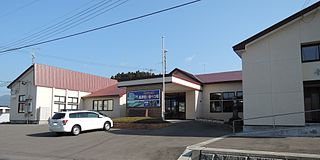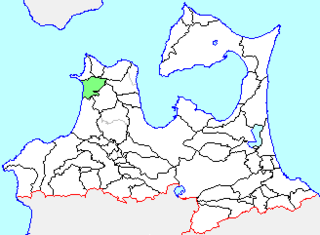It has been requested that the title of this article be changed to Goshogawara. Please see the relevant discussion on the discussion page. Do not move the page until the discussion has reached consensus for the change and is closed. |
| Goshogawara 五所川原市 | |||
|---|---|---|---|
| City | |||
Goshogawara City Hall | |||
| |||
 Location of Goshogawara in Aomori Prefecture | |||
| Coordinates: 40°48′28.9″N140°26′24.3″E / 40.808028°N 140.440083°E Coordinates: 40°48′28.9″N140°26′24.3″E / 40.808028°N 140.440083°E | |||
| Country | Japan | ||
| Region | Tōhoku | ||
| Prefecture | Aomori | ||
| Government | |||
| • Mayor | Masatoshi Hirayama | ||
| Area | |||
| • Total | 404.18 km2 (156.05 sq mi) | ||
| Population (December 31, 2017) | |||
| • Total | 55,746 | ||
| • Density | 140/km2 (360/sq mi) | ||
| Time zone | Japan Standard Time (UTC+9) | ||
| City symbols | |||
| • Tree | Japanese elm | ||
| • Flower | Nohanashōbu ( iris ensata var. spontanea) | ||
| • Bird | Oriental greenfinch | ||
| Phone number | 0173-35-2111 | ||
| Address | 12 Iwakichō, Goshogawara-shi, Aomori-ken 037-8686 | ||
| Website | Official website | ||
Goshogawara(五所川原市Goshogawara-shi) is a city located in Aomori Prefecture, Japan. As of 31 December 2017 [update] , the city has an estimated population of 55,746 in 25540 households, [1] and a population density of 140 persons per km2. The total area of the city is 404.18 square kilometres (156.05 sq mi).

A city is a local administrative unit in Japan. Cities are ranked on the same level as towns and villages, with the difference that they are not a component of districts. Like other contemporary administrative units, they are defined by the Local Autonomy Law of 1947.

Aomori Prefecture is a prefecture of Japan located in the Tōhoku region. The capital is the city of Aomori.

Japan is an island country in East Asia. Located in the Pacific Ocean, it lies off the eastern coast of the Asian continent and stretches from the Sea of Okhotsk in the north to the East China Sea and the Philippine Sea in the south.



























